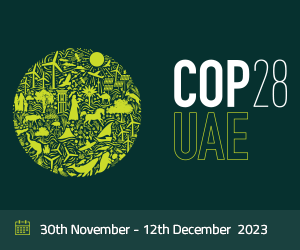CRTKL,a global cultural agency specialising in architecture, planning and design,hashighlighted three key ways digital technology is reducing 40% of greenhouse gas emissions the built environment is currently responsible for producing, in an industry-leading annual sustainability report.
According to CRTKL’s report, effective use of technology in the built environment ensures more sustainable outcomes and CRTKL has pledged that 50% of projects will utilise building simulations by the end of the year. Performance of these projects is being innovativelymeasured and tracked through a digital dashboard.This comes as part of CRTKL’s wider mission to ensureall of its projects are climate positive in operation by 2030, and in materials by 2040. It is aligned with efforts being taken across the region, with a recent survey highlighting thatas per 82% ofUAE-based IT decision-makers sustainability is now one of their organization’s most important drivers with commitments made to science-based targets.
KashifDafedar, Associate at CRTKL commented: “Digital innovations that integrate design and sustainability hold the key to a carbon positive built environment.This technology is providingclimate-specific, low-carbon solutions that reduce emissions, advance the net-zero momentum and establish a planet-positive designstandard.”
The three key ways digital technology is reducing the impact of the built environment on our planetinclude:
CLIMATESCOUT
The award-winning CLIMATESCOUT is a new, first-of-its-kind, open source platform which helps its users design buildings that uniquely respond to a site by providing climate-specific design advice at the building scale. CLIMATESCOUTconnects architectural responses and expressions with the climate in real-timeand aids in the ability to interact through a diagram between sustainable design strategies and climate conditions. The demand for this tool cannot be understated, with 14,000 views in less than the first year of launch.
Voted among Fast Company’s World Changing Ideas for 2022, CLIMATESCOUT pairs the Köppen-Geiger climate classification and building design strategies from Architecture 2030’s Palette.The web-based application uses a combination of images and data to enable the visualisation of low carbon, regenerative, resilient, and adaptive buildings.
Performance Driven Design (PDD)
PDD is a data driven design process that combines analogue and digital tools to design low-carbon buildings that are also more resilient and responsive to climate. It is a flexible process that can be tailored to any project goal. Bolstered by scientific principles, research and performance simulations, PDD guides designers in an increasingly complex world, improving the quality and value of any project.
Data analytics and computational design
Harnessing the power of data, computational design aims to provide as much value as possible by tailoring design solutions to the needs of the specific clients and communities. By drawing on ample evidence about the social, economic and environmental impact of design, building simulations analyse the greatest available intelligence to create compelling design with measurable benefits to people, place and planet. Analysing data in design improves sustainability in-built environment by reducing the impact on the natural environment.
KashifDafedar, added, “As computational designers and product development leaders, we are constantly trying to improve our collective understanding and propose responsible design solutions that are more climate responsive. By using a combination of internally created and off-the-shelf tools, we make it easier to incorporate sustainable strategies in our designs.”
For more information, please visit this link.



